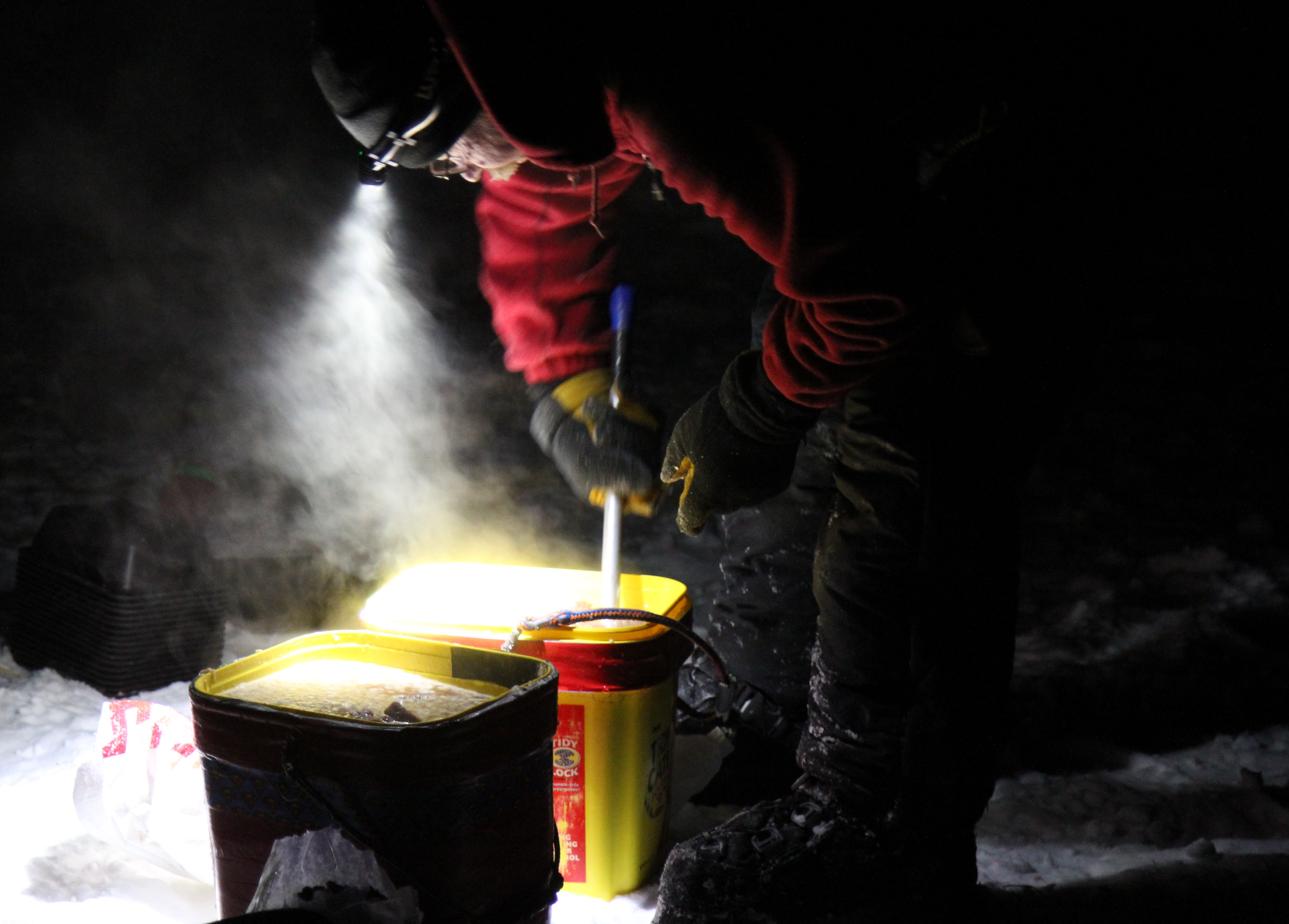
From Anchorage the mushers restarted in Willow on Sunday. Then, every two minutes, they took off headed east to the first two checkpoints: Yentna and Skwentna.
It was a festive atmosphere overnight as Iditarod mushers pulled into the Skwentna checkpoint, 83 miles into the trail. A bonfire blazed, while a musician belted out songs from a small heated tent. A few dozen fans and onlookers were gathered when the first musher’s blue-headlamp emerged out of the darkness and headed toward the race checkers under a welcome banner.
“Bib number?” “17” “And name?” “Ray Redington.” “Welcome Ray, you staying or going?” “Staying.” “Ok, you know the drill.”
After signing in, Ray Redington Jr. and all sixteen of his dogs pulled in for a rest at about 9:30 p.m. Sunday night. Just one minute behind him was Mats Pettersson, who led the full pack of mushers for a stretch of the evening before being overtaken not long before arriving.
Pettersson says so far, trail conditions are good.
“A little bit soft in the beginning, I think for everybody, but after Yentna it was really fine all the way here,” Pettersson said.
Pettersson, too, came in with a full string of dogs.
The third musher into the checkpoint was Mitch Seavey. He made the run in about the same amount of time, but did so with just 12 dogs on the line when he pulled in. Even still, Seavey says he was working to keep them at a slower, more controlled pace.
“But ya know I got four dogs in the sled, that helps slow things down.”
Seavey and his son Dallas have dominated the Iditarod in recent years while refining a strategy that involves rotating dogs in and out of their sleds for rest along the way.
The next few checkpoints after Skwentna pass through the Alaska Range, one of the most technically difficult sections of the trail.
Zachariah Hughes reports on city & state politics, arts & culture, drugs, and military affairs in Anchorage and South Central Alaska.
@ZachHughesAK About Zachariah




